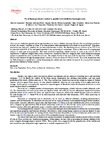Use este identificador para citar ou linkar para este item:
http://www.alice.cnptia.embrapa.br/alice/handle/doc/1000389Registro completo de metadados
| Campo DC | Valor | Idioma |
|---|---|---|
| dc.contributor.author | LAZZAROTTO, M. | pt_BR |
| dc.contributor.author | RUIZ, H. Z. | pt_BR |
| dc.contributor.author | LAZZAROTTO, S. R. da S. | pt_BR |
| dc.contributor.author | SCHNITZLER, E. | pt_BR |
| dc.contributor.author | MORAES, M. L. T. de | pt_BR |
| dc.contributor.author | CAMBUIM, J. | pt_BR |
| dc.contributor.author | SANTOS, W. dos | pt_BR |
| dc.contributor.author | AGUIAR, A. V. de | pt_BR |
| dc.date.accessioned | 2014-11-18T11:11:11Z | pt_BR |
| dc.date.available | 2014-11-18T11:11:11Z | pt_BR |
| dc.date.created | 2014-11-18 | pt_BR |
| dc.date.issued | 2014 | pt_BR |
| dc.identifier.citation | In: CONGRESSO BRASILEIRO DE ANÁLISE TÉRMICA E CALORIMETRIA, 9., 2014, Serra Negra. Trabalhos. [S.l.]: ABRATEC, 2014. | pt_BR |
| dc.identifier.uri | http://www.alice.cnptia.embrapa.br/alice/handle/doc/1000389 | pt_BR |
| dc.description | Pinus species exhibit fast growth and are good producers of wood, cellulose and resin. Brazil is the second largest producer of resin. The People?s Republic of China is the main producer with approximately 90% world?s resin production. Turpentine, volatile fraction, and rosin, solid fraction, are two major fractions or resin. The distillation process continues up to 170° C can be extracted about 95% of the total gum turpentine resin, preserving its constituents. There is little research using thermal analysis to study pine resin properties. This work involved evaporating volatile fraction of resins in an oven at 170 ºC consisted of 20 different samples from Pinus caribaea var. hondurensis and was compared with results obtained in thermal analysis to quantify the same fraction for each one. The volatile fraction in the oven (170 ºC) was from 14.69% to 24.05%. This fraction obtained through thermogravimetric analysis (TGA) was from 13.37% to 23.64%. The results demonstrate that the TGA technique is capable of accurately determining the volatile and non-volatile fractions of the resin and this technical proved to be suitable for further analyses. | pt_BR |
| dc.format | Disponibilizado online. | pt_BR |
| dc.language.iso | eng | eng |
| dc.rights | openAccess | eng |
| dc.subject | Espécie exótica | pt_BR |
| dc.subject | Terebentina | pt_BR |
| dc.subject | Breu | pt_BR |
| dc.subject | Resin | pt_BR |
| dc.title | Use of thermogravimetry analysis to quantify total volatile fraction in pine resin. | pt_BR |
| dc.type | Artigo em anais e proceedings | pt_BR |
| dc.date.updated | 2014-11-18T11:11:11Z | pt_BR |
| dc.subject.thesagro | Pinus Caribaea | pt_BR |
| dc.subject.thesagro | Resina | pt_BR |
| dc.subject.nalthesaurus | turpentine | pt_BR |
| dc.subject.nalthesaurus | rosin | pt_BR |
| dc.description.notes | CBRATEC. | pt_BR |
| dc.format.extent2 | 4 p. | pt_BR |
| riaa.ainfo.id | 1000389 | pt_BR |
| riaa.ainfo.lastupdate | 2014-11-18 | pt_BR |
| dc.contributor.institution | MARCELO LAZZAROTTO, CNPF; Henrique Zavattieri Ruiz, UTFPR; Simone Rosa da Silveira Lazzarotto, UEPG; Egon Schnitzler, UEPG; Mario Luiz Teixeira de Moraes, USP; José Cambuim, USP; Wanderley dos Santos, USP; ANANDA VIRGINIA DE AGUIAR, CNPF. | pt_BR |
| Aparece nas coleções: | Artigo em anais de congresso (CNPF)  | |
Arquivos associados a este item:
| Arquivo | Descrição | Tamanho | Formato | |
|---|---|---|---|---|
| 2014MarceloLCBATCUseOfThermogravimetry.pdf | 203,85 kB | Adobe PDF |  Visualizar/Abrir |









